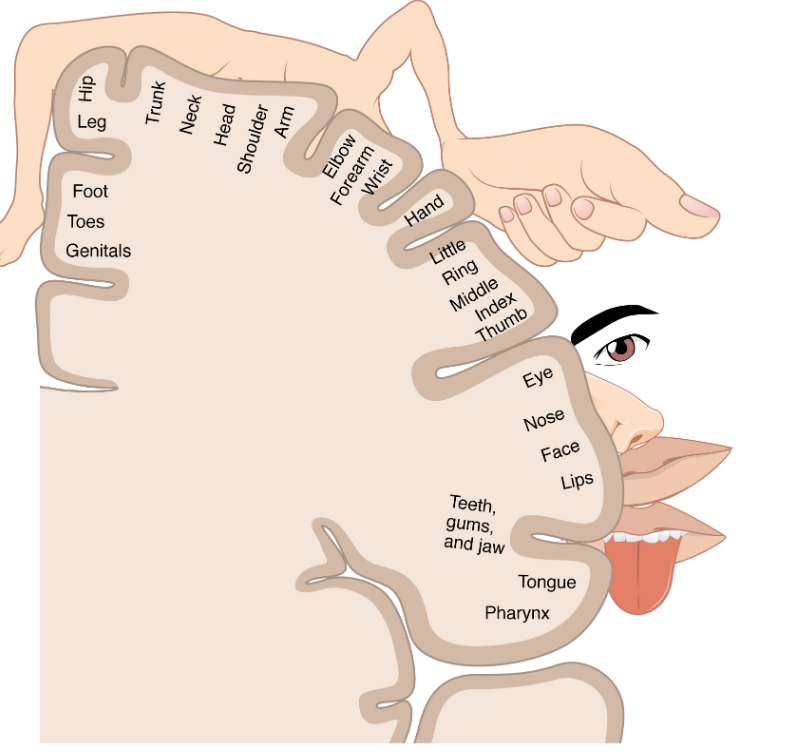Somatosensation
14 Somatosensory Representations in the Brain
Learning Objectives
Know what the somatosensory homunculus is.
Know where you can find primary sensory cortex, and what is different about the neural responses in primary sensory cortex and nearby regions in parietal cortex that also respond when you touch an object.
Be able to describe the effect of attention on neural responses.
The somatosensory homunculus is a representation of the human body in the brain’s somatosensory cortex. The term homunculus comes from the Latin word for “little man” and refers to a map of the human body that is laid across a portion of the cerebral cortex. Our brains are maps. This mapping results from the way connections in the brain are ordered and arranged. The ordering of neural pathways between different parts of the brain and those going to and from our muscles and sensory organs produces specific patterns on the brain surface.
The patterns on the brain surface can be seen at various levels of organization. At the most general level, areas that control motor functions (muscle movement) map to the front-most areas of the cerebral cortex while areas that receive and process sensory information are more towards the back of the brain. In the somatosensory homunculus, body parts with high sensory receptor density, such as the hands, lips, and tongue, are represented by larger areas of the homunculus, indicating a greater cortical area devoted to processing sensory input from these regions. Conversely, body parts with lower sensory receptor density, such as the trunk or limbs, are represented by smaller areas on the homunculus. The somatosensory homunculus serves as a model for understanding how the brain organizes and processes sensory information from different parts of the body.

Primary somatotopic representation (S1) is on the postcentral gyrus. It is a distorted map (body parts with high receptor density get more territory). Some senses that are controlled by the primary sensory cortex are touch, thermal information, orientation and direction. Regions in the parietal cortex outside S1 respond to more complex features such as object-selective responses.
Unattended stimuli can fail to elicit neural response, even in primary somatosensory cortex. But the effects of attention are stronger outside S1.
Watch the video linked here and included below to learn more about somatosensory representations in the brain!
CC LICENSED CONTENT, SHARED PREVIOUSLY
OpenStax, Anatomy and Physiology Chapter 14.2 Central Processing
Provided by: Rice University.
Download for free at https://openstax.org/books/anatomy-and-physiology/pages/14-2-central-processing
License: CC Attribution 4.0
Adapted by: Hanna Hoyt
Cheryl Olman PSY 3031 Detailed Outline
Provided by: University of Minnesota
Download for free at http://vision.psych.umn.edu/users/caolman/courses/PSY3031/
License of original source: CC Attribution 4.0
Adapted by: Hanna Hoyt and Eman Mohamed

